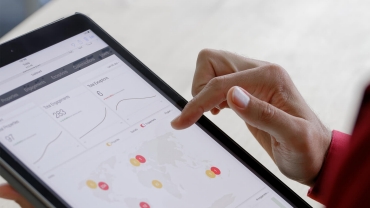
Highlights
- Artificial intelligence (AI) can transform the productivity and GDP potential of the global economy. Strategic investment in different types of AI technology is needed to make that happen.
- Labour productivity improvements will drive initial GDP gains as firms seek to "augment" the productivity of their labour force with AI technologies and to automate some tasks and roles.
- Our research also shows that 45% of total economic gains by 2030 will come from product enhancements, stimulating consumer demand. This is because AI will drive greater product variety, with increased personalisation, attractiveness and affordability over time.
- The greatest economic gains from AI will be in China (26% boost to GDP in 2030) and North America (14.5% boost), equivalent to a total of $10.7 trillion and accounting for almost 70% of the global economic impact.
Explore the global results further using our interactive data tool or see which of your products and services will provide the greatest opportunity for AI. You can also download our report to get a more detailed analysis and commentary on the positive economic outcomes.
Download the full report (PDF)Opens in a new window (file size: 13.6 MB)

$15.7 trillion game changer
Total economic impact of AI in the period to 2030
What comes through strongly from all the analysis we’ve carried out for this report is just how big a game changer AI is likely to be, and how much value potential is up for grabs. AI could contribute up to $15.7 trillion1 to the global economy in 2030, more than the current output of China and India combined. Of this, $6.6 trillion is likely to come from increased productivity and $9.1 trillion is likely to come from consumption-side effects.
While some markets, sectors and individual businesses are more advanced than others, AI is still at a very early stage of development overall. From a macroeconomic point of view, there are therefore opportunities for emerging markets to leapfrog more developed counterparts. And within your business sector, one of today’s start-ups or a business that hasn’t even been founded yet could be the market leader in ten years’ time.
AI impact index
AI is set to be the key source of transformation, disruption and competitive advantage in today’s fast changing economy. In this report we've drawn on the findings to create our AI Impact Index, where we look at how quickly change is coming and where your business can expect the greatest return.
The areas with the biggest potential and associated timelines are designed to help your business target investment in the short- to medium-term.
Explore the AI impact by sector
Explore our findings in the data explorer below - the AI Impact scores range from 1-5 (1 being lowest impact, 5 being highest).
Which of your products and services will provide the greatest opportunity for AI?
Healthcare
High potential use case: Data-based diagnostic support
AI-powered diagnostics use the patient’s unique history as a baseline against which small deviations flag a possible health condition in need of further investigation and treatment. AI is initially likely to be adopted as an aid, rather than replacement, for human physicians. It will augment physicians’ diagnoses, but in the process also provide valuable insights for the AI to learn continuously and improve. This continuous interaction between human physicians and the AI-powered diagnostics will enhance the accuracy of the systems and, over time, provide enough confidence for humans to delegate the task entirely to the AI system to operate autonomously.
Barriers to overcome
It would be necessary to address concerns over the privacy and protection of sensitive health data. The complexity of human biology and the need for further technological development also mean than some of the more advanced applications may take time to reach their potential and gain acceptance from patients, healthcare providers and regulators.
Contact us


























